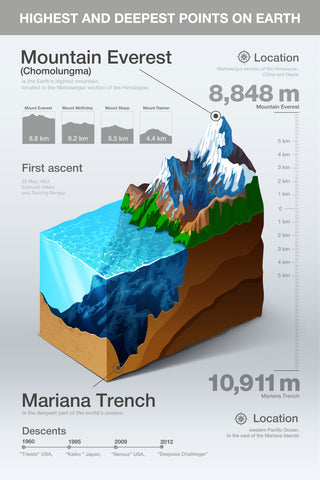When reading facts about the ocean, it’s easy to mistake them for outer space.
It is home to mysterious creatures, alien flora and fauna humans have never glimpsed. It is hostile and unforgiving, reaching pressures high enough to vaporize the human body quicker than the blink of an eye.
It’s no surprise that great storytellers like Jules Verne and Herman Melville looked no further than Earth’s oceans to set great adventures. Captains Nemo and Ahab both struggle with man’s hubris in the face of this powerful, untameable body and its occupants.

Like space, the oceans are largely unmapped. We have only explored 10% of the ocean bottom, making it a much more pressing wilderness than what lies beyond the reach of Earth’s atmosphere. Water covers more than 70% of our planet’s surface (361,000,000 km2) and is subdivided into five smaller oceanic bodies: Pacific, Atlantic, Arctic, Antarctic, and Indian.
Nothing impacts human life on the scale that our oceans do, and they are essential to the continuation of life on our planet.
The oceans hold and distribute heat, which keeps the planet temperate. They also generate life-sustaining gasses like oxygen, nitrogen, and carbon dioxide. There are so many plants, animals, and fungi that call the oceans home that the approximate 2 million marine species we have catalogued are likely only a drop in the bucket. The number of animals is so large, that 94% of all wildlife on Earth calls the oceans home sweet home.

Our oceans are the most remarkable thing about our planet. The hundreds of travelogues that fill movie theatres, lecture halls, and bookstore shelves would have nothing on the wonder these vast waters conceal. For example, the deepest trench on Earth is at the ocean bottom – the Mariana Trench. It is seven times deeper than the Grand Canyon.
Nothing impacts human life on the scale that our oceans do, and they are essential to the continuation of life on our planet...but it is all at risk.
But the ocean doesn’t just own the depths. The highest mountain is (mostly) covered with water. Though visitors to Hawai’i can view 13,800 ft of Mauna Kea, this massive inactive volcano stretches 19,700 feet underwater. This makes it nearly 3,500 feet taller than Mount Everest, even though over half of that is hidden under the surface.
And the tourist attractions don’t end there. The ocean is constantly rumbling with volcanic activity, so mighty that it hosts its own rivers and lakes, and serves as a highway for giants like the blue whale.
In the next article, we'll take a deeper look at the shocking impacts of ocean plastic pollution on our oceans...
Stay tuned!

